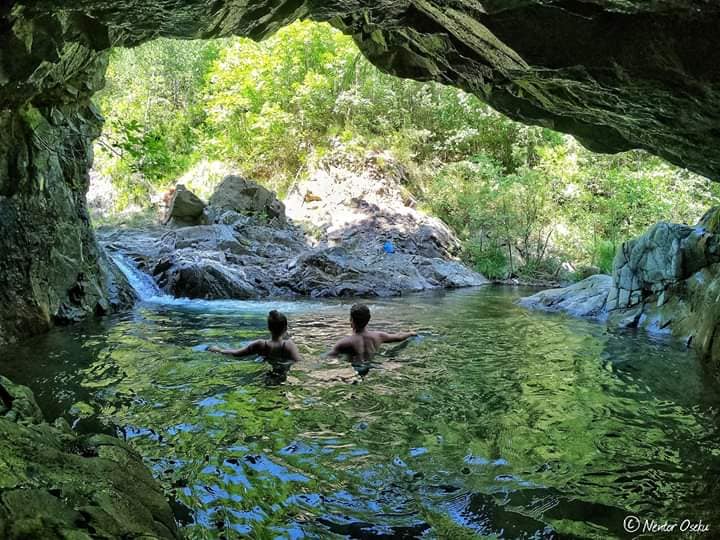TIRANA, July 15
Kryezi (or in Albanian: Kryeziu) is a village in the Puka municipality, Shkodra county. It is one of the villages chosen by the government for the project ‘100 Villages’, which aims at the economic and tourist development of 100 villages throughout Albania. Kryezi is one of the most beautiful villages in the north of the country, rich with water resources, canyons, waterfalls, and many historic and cultural traditions. Its name is believed to come from the black crest of the pines that dominate the village above the Hill of Gega.

The village of Kryeziu is stretched along a valley for about 3 km, from the Bridge of Bardheti and the Bridge of Kodergege, up to the Neck of Ballci (in Albanian: Qafa e Ballcit). The neighborhoods of Kryeziu are: Lajthiza, Orosh, Brahaj, Murataj, Arifaj, Dervishaj, Quk Ballshi, and Zallah. There are many streams that pass along through the village, are: Fani, Rrahi, Kroni Hys, Pllacka, Bens, Prrezi, Nermjece Qaf-Hije, Brraka Kolics, Lum Mahall, etc.
Currently, the village has 1,200 inhabitants, and it is known as the place of origin of many famous Albanian patriots from the movement of the Albanian National Awakening movement (also known as the Albanian Renaissance) from the 19th century until 1912.

Waterfall of Kryezi Video Credit/ Ilir Shyti FB
Reading suggestion: What Are the ‘100 Villages’ Part of the Rural Development Program
Agriculture and Farming
The village of Kryezi produces these agricultural products: vegetables, corn, grains, potato, bean, grapes, walnuts, chestnuts, hazelnuts, pears, apples, cherries, berries, etc. Also, the honey produced in Kryezi goes for sale in Tirana’s market. Kryezi is known for its farming too, raising cows, goats, pigs, etc.
Hunting
In the village, since in ancient times, it is practiced the hunting of the wild animals, respecting the regulations of hunting, done mostly in the wintertime where it snows, and especially in the high grounds, where there are many forests.
Ethnicity
In Kryezi live 12 different families and the two main religions there are: Muslim and catholic. But these families, as everywhere in Albania live in harmony with each other, furthermore, they take part in the local decisions regarding the village. One particular thing is that the women of the village dress in a way that shows from which tribe (or family) they come from.
In the past, it was a tradition that if you wanted to marry a woman from the area of Mirdita, the woman had to be dressed in the traditional costume of Mirdita. That is why many women seem like they come from that area, even though the accent of the residents of Kryezi resembles more with the accent of the town Puka municipality where it is part of.

Historic and Archaeological Values
Castles
Castle of Krepa (in Albanian: Kalaja e Krepave)
Castle of Leks (or in Albanian: Kalaja e Leks or Guri i Gjodhise)
Churches
The Forth Church (in Albanian: Kisha e Katert) built in 1920
Church of Saint Paraskevi (in Albanian: Kisha e Shnaprendes or Shen Premtes)

The Old Walls
In the south of Fushe-Groshe, you could spot the old walls. The walls are almost parallel with each other in a distance that oscillates between 10-30 meters. This distance narrows with the slope of the land. Also, there is a barrack in the area, where the two walls meet, creating the shape of a funnel. The walls have a height of 1.30 meters and are built with normal stones, but it seems that there was an attempt to use bigger stones too, with a diameter of one meter, which are made of lime mortar and without being carved whatsoever.
There is a belief that these walls were built in the Middle Ages, precisely from the era of Principality of Arbanon, to protect the area from the erosion. Also, these walls might have been used as a barricade by the local habitants to avoid the arrival of foreigners from the bank of the river that runs across the Kryezi village and to be closer to the streets and the castle too.
Source/ Koha Jone
Read also: Lukova, the Hidden Village of Saranda

Leave a Reply
You must be logged in to post a comment.